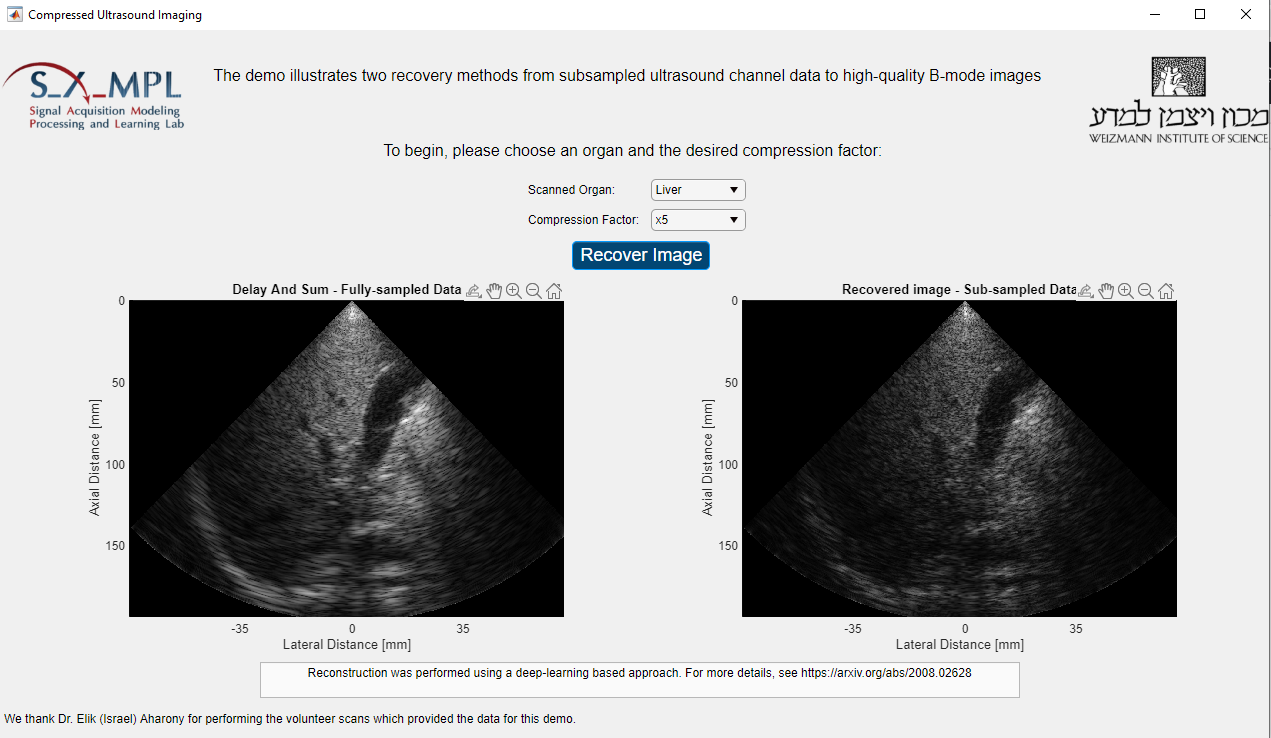Compressed Beamforming
N. Kessler, A. Mamistvalov and Y. C. Eldar
Introduction
Traditional beamforming of medical ultrasound images consists of sampling and processing the signals from each transducer element and digitally introducing appropriate delays, in a process referred to as delay and sum (DAS) beamforming. However, it necessitates sampling rates which are significantly higher than the actual Nyquist rate of the received signals, in order to achieve a sufficient resolution. This results in large amounts of data to store and process, translating to big, expensive and power-hungry devices. Here, we present two alternative reconstruction methods which offer high-quality reconstruction from diluted data, up to x36 reduction factor in data volume. The first method is compressed frequency domain convolutional beamforming (CFCOBA) scheme, which combines Fourier domain beamforming, sparse convolutional beamforming (SCOBA) and compressed sensing methods to enable the formation of high resolution images from sub–Nyquist sampled measurements taken at a sparse subset of array elements. The second method operates on similar input data and utilizes a deep-learning based solution to learn both reconstruction from the subsampled signals and adaptive apodization weights.



References
- A. Mamistvalov and Y. C. Eldar, "Compressed Fourier-Domain Convolutional Beamforming for Wireless Ultrasound imaging", to appear in IEEE Transactions on Ultrasonics Ferroelectrics and Frequency Control.
- N. Kessler and Y. C. Eldar, "Deep-Learning Based Adaptive Ultrasound Imaging From Sub-Nyquist Channel Data", Submitted to IEEE Transactions on Medical Imaging, August 2020.

